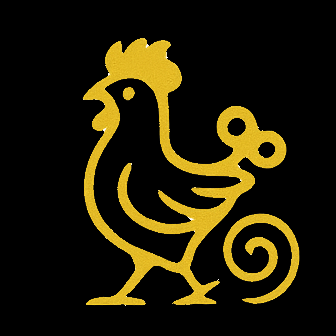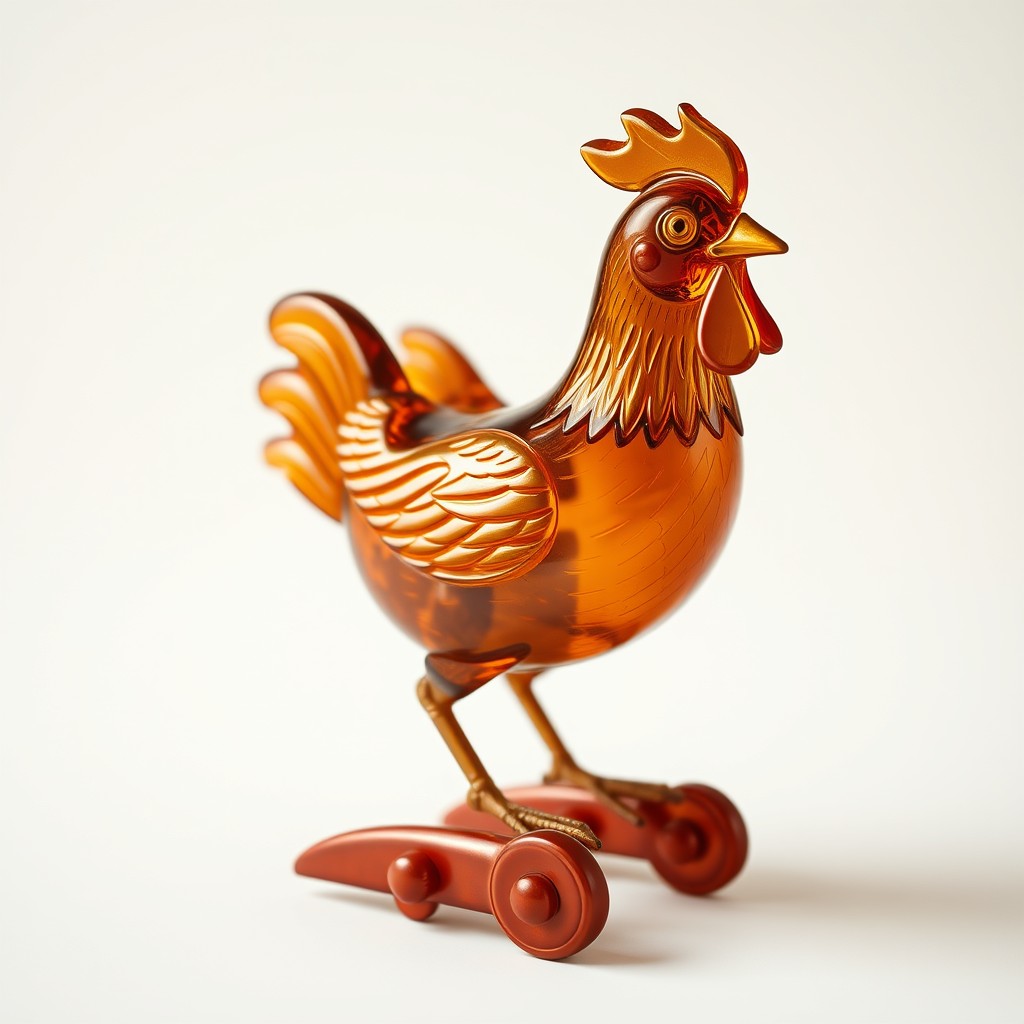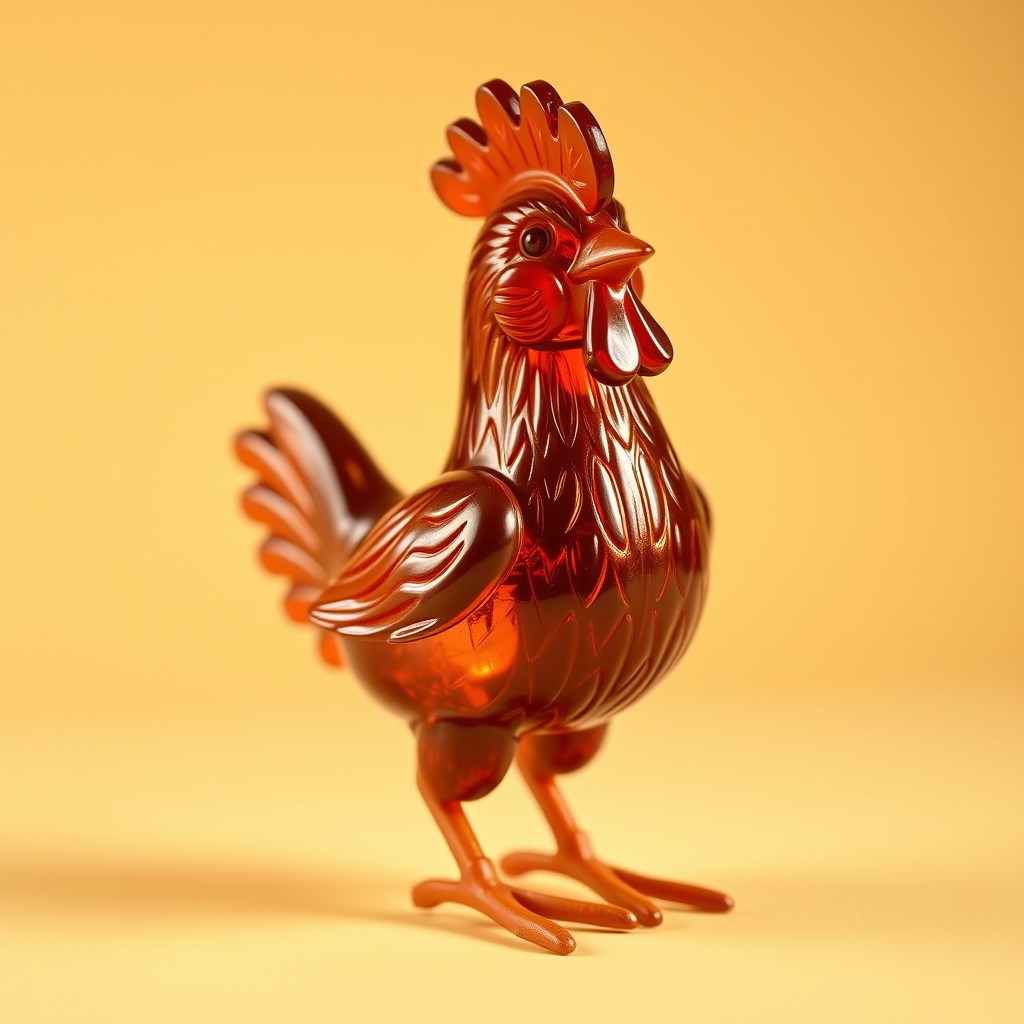 History
History
A short history of vintage clockwork — and the “Amber Jumping Chicken”
From court automata to mid-century playrooms: how spring power shaped toys, and where our Amber Jumping Chicken fits in.

Key motifs: plate seams · cam track · translucent amber varnish
Origins of mechanical play
Clockmakers’ automata evolve into household wind-ups as tooling improves.
From automata to wind-up toys
Early spring-driven figures dazzled courts; later, compact mainsprings and stamped gears made smaller, affordable toys possible. Standardised keys and barrel designs spread across makers.
Industry & access
Industrial presses and better steels lowered cost and raised reliability, moving clockwork from cabinets of curiosity into everyday family rooms.
Milestones
- • Early springs drive showcase automata
- • Stamped gears & tabs streamline assembly
- • Standard keys = safer, repeatable winding
- • Household wind-ups enter mass markets

1920s–1950s: the golden age
Makers competed on lifelike motion: cams, levers, and tuned springs produced charming gaits and hops. Our Amber Jumping Chicken emerges from this period — a small, precise mechanism with a lively cadence.
Craft & repeatability
Hand-fit seams and period inks met factory jigs and gauges. The result: durable playthings with serviceable parts — why so many survive in collections today.
Cultural impact
Wind-ups taught cause & effect and rewarded patient, careful handling. They bridged entertainment and early STEM — energy storage, gearing, and motion.
Middle-class symbol
As prosperity rose, durable toys with tasteful finishes became markers of quality at home — the Amber Jumping Chicken fits the brief: dependable run, warm finish, expressive motion.
Why collectors care
- • Hands-on mechanics & learning value
- • Period inks & plate art
- • Repairable, modular mechanisms
- • Family nostalgia & display appeal
Mechanism refinements
Tuned mainsprings, cam stacks, and foot pads create the signature hop-step. Even wind and smooth cadence are authenticity cues; gritty wind suggests wear or contamination.
Finishes & inks
Translucent amber varnish should reveal print beneath. Over-polish flattens edges and blurs registration — originality typically outvalues shine.
Decline & revival
Electronics shifted demand; many clockwork lines closed or adapted. Later, collectors revived interest, valuing craft, repairability, and sustainable longevity.
Modern relevance
Great for STEM demos, display-friendly, and often serviceable. The Amber Jumping Chicken anchors themed shelves with warm color and motion.
Today’s appeal
- • Educational, screen-free mechanics
- • Conservation over replacement
- • Documentable provenance & value
- • Strong display and gift potential
Legacy & preservation
Durability, mechanical clarity, and playful motion continue to influence modern education-focused toys. Conservation practice keeps originals running and readable.
Why we preserve
These pieces record manufacturing methods, ink styles, and family culture. Documentation and gentle care protect both story and value.
Collector actions
- Record Photos, dates, owners, service
- Display UV-controlled, neutral-pH supports
- Operate Gentle wind, full run-down
- Consult Pro help if cadence changes
A quick timeline
Context for identifying authentic period details.
Automata era
Showcase springs & gears; demonstrations of skill.
Mass tooling
Stamped plates, repeatable barrels, tabbed seams.
Golden age
Iconic animal gaits; our Amber Jumping Chicken appears.
Electronics
Shift to lights/sound; clockwork lines contract.
Collector revival
Conservation, provenance, and display culture grow.
Education
STEM demos with original cams, springs, and cadence.
Want deeper references?
We can help compare seam lines, ink registration, and cam profiles.